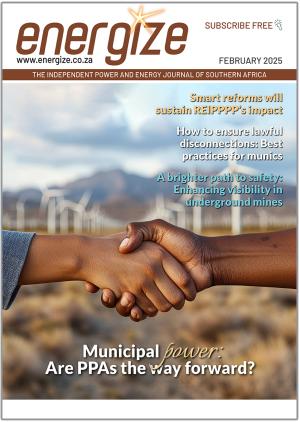An interview with Jan Oberholzer, former Chief Operating Officer at Eskom
South Africa's energy landscape is undergoing a transformative phase, urgently needing to address the current energy crisis and pave the way for a sustainable future.
Frikkie Malan, Chief Commercial Officer at RMS, and Ilse Swanepoel, RMS’s Chief Operating Officer, recently had the opportunity to speak with Jan Oberholzer of Eskom, to gain insights into the steps to navigate this challenging terrain. The interview was conducted in April 2023 during his capacity as Chief Operating Officer of Eskom.

Despite the critical role Eskom plays in the energy sector, Oberholzer emphasised that the energy crisis is a collective challenge that requires collaboration among all stakeholders.
One significant development that holds the key to shaping the future energy landscape is the "unbundling" of Eskom into separate and independent entities responsible for generation, transmission, and distribution. This strategic move marks a crucial step forward, with the cabinet adopting the draft Electricity Amendment Bill and establishing an independent transmission system operator (TSO). The TSO will ensure accurate demand forecasting and facilitate the integration of diverse energy sources, including solar, wind, gas, pumped energy storage, battery energy storage, hydrogen, and nuclear power, into the national grid.
Oberholzer highlighted the pressing need to transition from coal, which has long been the primary energy source, to a diversified mix of alternative energy sources. Simultaneously, it is essential to upgrade the transmission infrastructure to enable efficient electricity transmission from remote regions to areas of demand. He drew an analogy between the electrical transmission infrastructure and the human circulatory system, stressing the importance of strengthening the veins that carry energy from the heart to the arteries and veins further away. Building new generation capacity in regions like the Northern Cape would only yield results if the transmission infrastructure can effectively deliver the energy to where it is needed.
However, accelerating the rate of transmission infrastructure upgrades comes with its challenges. The process requires increased execution capacity, which must be matched with the availability of raw materials on a global scale. Moreover, policy and regulatory adjustments are crucial to align with the changing energy landscape. While these hurdles may seem daunting, he expressed his optimism and excitement about the opportunities that lie ahead in the next decade.
Oberholzer stressed the importance of collaboration and understanding among all stakeholders to successfully navigate the energy transition. Blaming Eskom and its people solely for the energy crisis is unjust, as it is a complex issue influenced by various factors, including the legislative and regulatory framework. His commitment to Eskom and the dedicated efforts of its workforce in these challenging circumstances were evident throughout our conversation.
As South Africa charts its course toward a sustainable energy future, stakeholders need to come together, acknowledging the magnitude of the challenges while recognising the opportunities for growth and progress. By embracing the unbundling of Eskom and investing in diversified energy sources and robust transmission infrastructure, South Africa can take significant strides toward a more sustainable, reliable, and inclusive energy landscape.
Send your comments to rogerl@nowmedia.co.za















